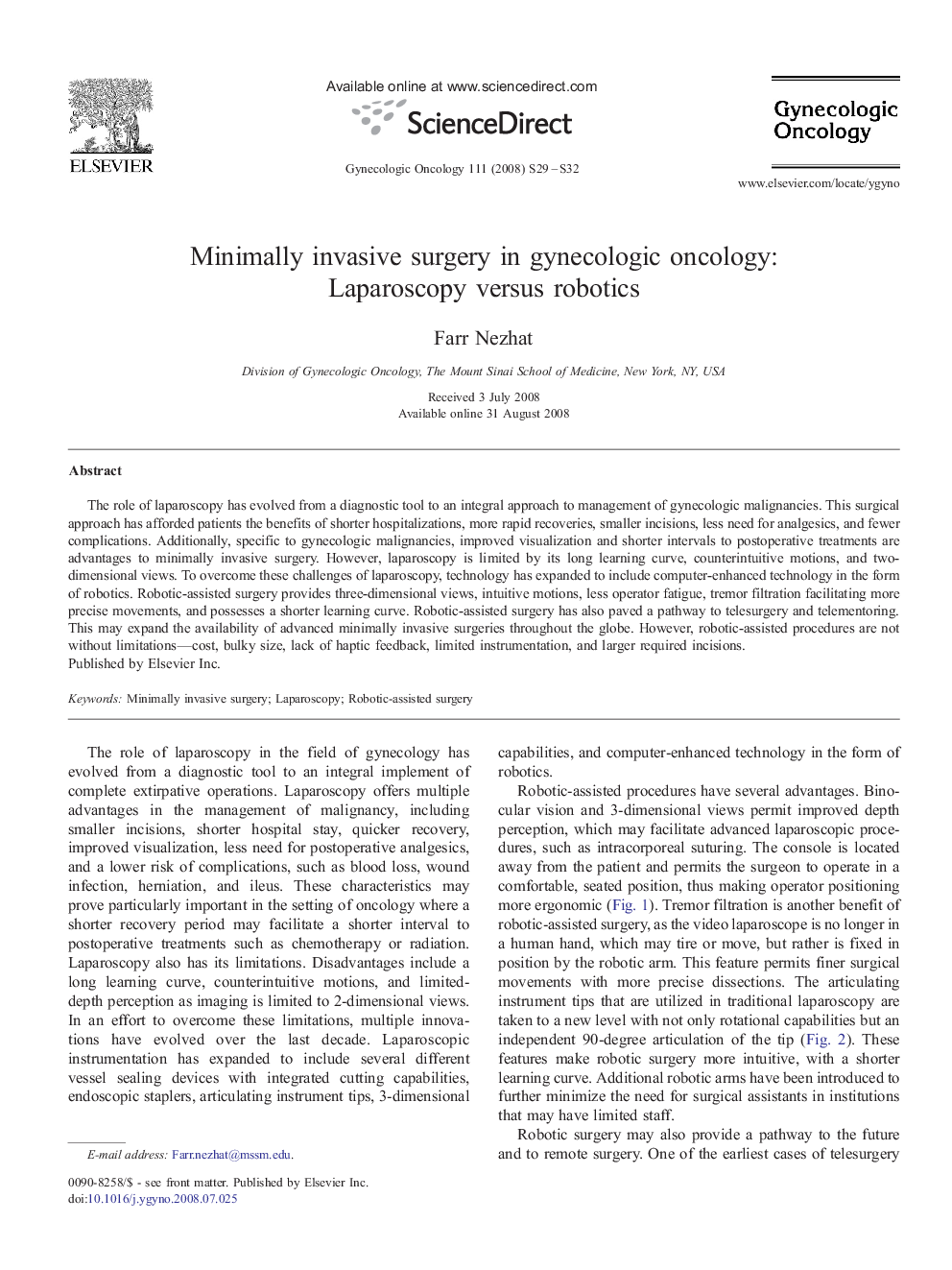| Article ID | Journal | Published Year | Pages | File Type |
|---|---|---|---|---|
| 3944473 | Gynecologic Oncology | 2008 | 4 Pages |
The role of laparoscopy has evolved from a diagnostic tool to an integral approach to management of gynecologic malignancies. This surgical approach has afforded patients the benefits of shorter hospitalizations, more rapid recoveries, smaller incisions, less need for analgesics, and fewer complications. Additionally, specific to gynecologic malignancies, improved visualization and shorter intervals to postoperative treatments are advantages to minimally invasive surgery. However, laparoscopy is limited by its long learning curve, counterintuitive motions, and two-dimensional views. To overcome these challenges of laparoscopy, technology has expanded to include computer-enhanced technology in the form of robotics. Robotic-assisted surgery provides three-dimensional views, intuitive motions, less operator fatigue, tremor filtration facilitating more precise movements, and possesses a shorter learning curve. Robotic-assisted surgery has also paved a pathway to telesurgery and telementoring. This may expand the availability of advanced minimally invasive surgeries throughout the globe. However, robotic-assisted procedures are not without limitations—cost, bulky size, lack of haptic feedback, limited instrumentation, and larger required incisions.
